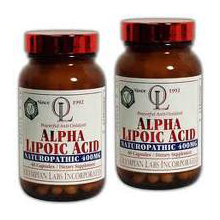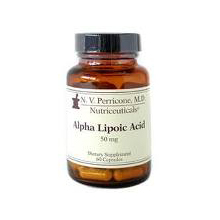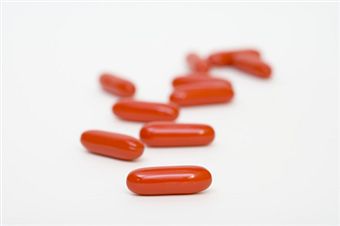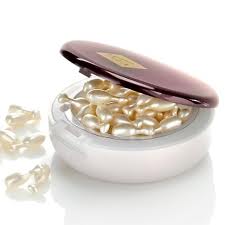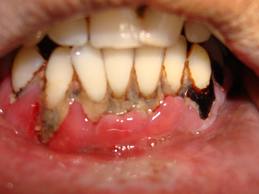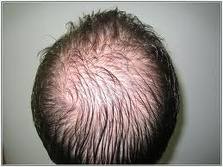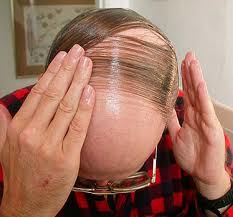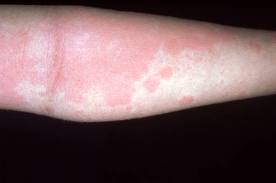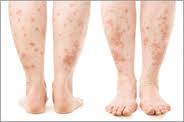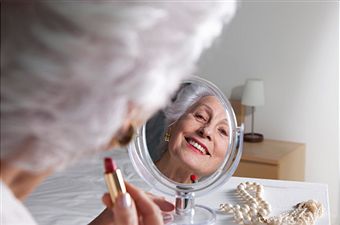Vitamin A
Overview
Vitamins are organic compounds that living organisms need in order to survive. These compounds are molecules that cannot be synthesized efficiently and in large enough quantities by the body and must be obtained from outside sources like food and/or nutritional supplements.
Vitamins are classified based on how they interact with the body chemically rather than on their molecular structure. This means that, a particular vitamin, like Vitamin A, is not one specific substance, but rather a group of compounds and molecules that produce the same range of effects on the human body. These compounds and molecules are called vitamers.

For example, some common vitamers of Vitamin A include retinol, retinal, alpha-carotene, beta-carotene, gamma-carotene, and beta-cryptoxanthin. All of these compounds are chemically different, but work in the same way to provide the human body with proper nutrition.
Vitamins & Nutrition
Vitamins play a crucial role in human nutrition, helping the body to regulate cell growth, regulate hormones, and help enzymes to act as catalysts in metabolism. In addition to his, certain vitamins like Vitamin A, Vitamin E, and Vitamin C can act as powerful antioxidants, which can bind to dangerous, cancer causing free radicals in the body.
Vitamins are water or fat soluble, depending on the vitamin. Soluble refers to the ability of a vitamin to dissolve in a particular substance. In the case of water soluble vitamins such as Vitamin C, the human body uses as much as it needs for metabolism. The excess water soluble vitamin is then dissolved in the body’s fluid and excreted as urine.
For fat soluble vitamins, like Vitamin A, the body uses what it needs to maintain proper nutrition, and then stores the extra vitamin in the body’s fat stores and liver. The excess of the fat soluble vitamin cannot be eliminated from the body very easily, so over time, given enough of a fat soluble vitamin, toxicity can develop. In humans, Vitamins A, D, E, and K are fat soluble, while the 8 B vitamins and Vitamin C are water soluble.
Growth and Nutritional Value
Vitamins are essential for growth and proper nutrition. They regulate many bodily functions including metabolism and hormones. Any deficiency in a particular vitamin can cause a host of medical problems including death.
History of Vitamin A
Vitamin A is one of the most important vitamins that humans need in order to survive because it is responsible for a large number of important functions in the body. Vitamin A was discovered in the early 1900s through experiments that probed the question of why cows produced healthier offspring when fed corn rather than wheat. In a series of experiments on mice, Elmer McCollum, noted that when mice were fed diets consisting only of protein, their offspring were often unhealthy and sometimes afflicted with birth defects.
When he introduced some fats into the diet, their offspring were born healthy and normal. He hypothesized that there was a certain chemical in the fat inclusive diet that was not found in the protein diet. This compound became known as Vitamin A and was recognized to be a fat soluble substance.
Until the 20th century, all vitamins had to be derived from food, but with advances in biochemistry, scientists were able to begin to synthesize all the necessary vitamins for human health. Vitamin A was synthesized in 1947 by David Adrian van Dorp and Jozef Ferdinand Arens, from the Netherlands.
Vitamers of Vitamin A
Vitamin A is not a single compound. Instead, it is a group of compounds that all have the same biologic effect on the body. These compounds are called vitamers. The vitamers of Vitamin A are retinol, retinal, alpha-carotene, beta-carotene, gamma-carotene, and beta-cryptoxanthin.
Retinol, derived from animal fat, is the body’s most usable source of Vitamin A. Several chemicals in the body have retinol as their bases including retinal, retinoic acid and retinyl esters. Retinal is a central component to human vision. Together, these molecules are referred to as retinoid compounds.
The three carotene vitamers belong to a class of organic molecules called carotenoids. Carotenoids are naturally occurring pigments found in plants and some fungi. Animals do not produce carotenoids. The names, “alpha,” “beta,” and “gamma” are used to denote structural differences on the molecular level among the organic compounds. Beta carotene is an inactive form of Vitamin A that can be readily converted into an active form by the body.
Beta-cryptoxanthin, like the carotene compounds, is a member of the carotenoid family. What differentiates it from the carotenes is that it has a slightly different structural formula in that it contains an oxygen molecule. Cryptoxanthin can be derived from both plant and animal sources including oranges, papaya, eggs, and butter.
Nutritional Benefits and Functions
Vitamin A is essential for basic bodily functions. Deficiencies in Vitamin A may cause illness or even death. Here are some of Vitamin A’s most important roles in human nutrition:
- Vision
- Immune Function
- Gene transcription
- Skin health
- Embryonic development
- Antioxidant properties
- Cell Growth
Vision
Normal vision is dependent on having a healthy retina and having enough Vitamin A. In the eye, the retina is an area of tissue on the back of the eye that is home to light sensitive cells called rods and cones. Rods are responsible for detecting light and dark, while cones allow people to perceive colors. Vitamin A plays a crucial part in vision.
In the retina, Vitamin A, in a form called cis-retinal, is combined with a protein called opsin, to form another compound called rhodopsin, which is a light sensitive compound found in rods. In cones, retinal binds with a protein to form iodopsin. When stimulated by light, Vitamin A in the form of cis-retinal transforms from being bent in shape to straight.
The straight shaped form of retinal is called trans-retinal. The molecule then detaches from the opsin protein. The opsin protein, then changes shape, signaling the brain to produce a black and white image of the objects being observed by the person. Most retinal used in this process is then released as trans-retinal and then converted back into cis-retinal where the cycle can begin again.
Immune Function
The immune system is the body’s defense against pathogens like dangerous viruses and bacteria. When a foreign invader, like a virus, enters the body, the body’s immune system detects that there is an unknown intruder and sends specialized cells to try to kill it.
Vitamin A helps to stimulate the immune system by promoting the overall health of the thymus gland. The thymus gland is a small gland in the neck that is part of the human immune system. The thymus gland produces specialized white blood cells called T-lymphocytes. These cells are the body’s “killer” cells activate during an immune response in an effort to rid the body of the pathogen.
Speeds up Immune Response
Vitamin A also helps their effectiveness and efficiency, speeding up the response time of the immune system. Also, Vitamin A has been shown to have anti-viral properties. Retinoic acid, derived from the vitamer retinol, plays an important role in the health and growth of delicate mucosal and epithelial tissues found in the respiratory and gastrointestinal systems.
Mucosal and epithelial tissues are some of the most basic defenses of the immune system. They produce mucus, which can trap bacteria and viruses, before they have a chance to invade the body any further.
Gene Transcription
Vitamin A plays an important role in gene transcription. Transcription is the process by which RNA is created from DNA, transferring genetic information to the RNA molecule. Retinol is used by cells to form retinal, which is then converted into retinoic acid. From there, retinoic acid binds with specialized receptors that can either turn on gene transcription or stop it from happening by undergoing a complex series of reactions.
Skin health
The benefits of Vitamin A have been long linked with maintaining healthy skin and complexion in humans. Deficiencies in Vitamin A can manifest themselves in people by causing dry and flaky skin. Vitamin A is important in regulating the growth and repair of skin tissue.

Although Vitamin A can be ingested for skin care, topical application remains the best treatment for skin conditions. Retinol creams have been shown to help prevent wrinkles from developing and masking the ones that already exist. Vitamin A can also help to control acne. Sebaceous glands are small glands in the skin that secrete material that is used by the body to lubricate the hair and skin.
They can harbor bacteria and get infected, which is the cause of acne outbreaks. Ongoing research has shown that retinoic acid that is applied topically can reduce the size of sebaceous glands and their secretions. The reduction of the sebaceous gland secretions is thought to be the reason why Vitamin A can combat acne.
The secretions provide nutrients for bacteria that cause acne, and without nutrition, the bacteria cannot take a foothold in the gland to produce a pimple.
Embryonic development
Vitamin A’s discovery was contingent on experiments dealing with the development of livestock offspring. It was discovered in the early 1900s by Elmer McCollum that female mice, which were deficient in Vitamin A, produced offspring that were unhealthy, had severe birth defects and/or died. Further research into this subject over the past 100 years has led to the understanding that an adequate amount of Vitamin A is a requirement for normal embryonic development.
Vitamin A is necessary for the embryo to form a healthy heart, nervous system, and skeleton. The correct balance of Vitamin A is also important in embryonic development and growth. While too little Vitamin A can cause birth defects and death of the fetus, so to can having too much of the vitamin.
Antioxidant properties
Oxidants, or free radicals, are oxygen carrying molecules in the body that can cause damage to cells, which can cause diseases like cancer. Antioxidants are molecules that can bind with free radicals, decreasing their potential to cause harm to the body on a cellular level. Some antioxidants can even help to repair damage done by free radicals. Vitamin A is a powerful antioxidant, however studies have been done that show that smokers who take Vitamin A supplements (in particular beta carotene) had an increased risk of developing lung cancer.
Cell growth
Much current research is underway to determine how Vitamin A affects cell growth. The mechanism is not fully understood, but it has been determined that retinoic acid plays a role in the production of glycoproteins. Glycoproteins are proteins that help cells adhere to one another.
Sources of Vitamin A and daily recommended values
Vitamin A in the form of retinol is found in animal products including meat, butter, eggs, and milk. The carotene vitamers of Vitamin A are plant based and can be found in large amounts in orange hued vegetables such as carrots, pumpkin, winter squashes, sweet potatoes, apricots, cantaloupe, mango, and papaya. For example, a 1 cup serving of raw carrots provides 686% of the daily value of Vitamin A required by the body. Green vegetables such as kale, spinach, broccoli, and leafy greens are also a good source of Vitamin A.
The daily recommended amounts of Vitamin A depend on age and gender. Typically, men require more than non-lactating females. For adult males, the daily recommended amount of Vitamin A is 900 micrograms per day, with a maximum of 3000 micrograms per day. For adult females, the recommended amount per day is 700 micrograms, with the maximum amount being 3000 micrograms.
Females who are breast feeding need more Vitamin A in order to provide an adequate supply of nutrition for the newborn baby. The recommended amounts for breast feeding women are 1300 micrograms with an upper limit of 3000 micrograms.
Unlike other vitamins and minerals that may be leached or destroyed by cooking and processing, Vitamin A is largely unaffected by these methods of food preparation.
Vitamin a deficiency
Vitamin A deficiency is a major nutritional problem faced by millions of people across the world. Most often, these deficiencies are seen in developing countries that have limited food supplies. Developing countries often have a lack of quality meats that are the best sources for Vitamin A. Also, meat contains the mineral iron which is important in the body’s utilization of Vitamin A.
Night blindness and a lack of tear production are major factors contributing to blindness caused by a Vitamin A deficiency. Night blindness is a condition in which a person does not have adequate photoreceptive cells that can process light entering the eye.
As seen earlier, the retinal form of retinol plays an important role in vision by binding with proteins in the retina to form molecules that help to transmit nerve impulses from the retina to the brain.
Vitamin A deficiency can also affect the eye’s ability to produce tears. Tears serve the function of washing the eye of debris and bacteria. Without tears, the eyes lose an important component in the body’s fight against infection. Each year between one quarter and one half of a million children worldwide go blind because of inadequate Vitamin A intake.
A condition called hyperkeratosis may develop in people afflicted with Vitamin A deficiency. People manifesting the symptoms of this condition develop small bumps on the skin that is the result of excess keratin proteins blocking hair follicles. Other symptoms include itching, dry skin, and eventual hair loss over the whole body.
Vitamin A deficiency can be either primary or secondary in origin. A primary deficiency is one caused by an inadequate supply of nutrients, while a secondary deficiency is caused by another underlying condition. One cause of secondary Vitamin A deficiency are medical conditions like Crohn’s disease, celiac disease, cystic fibrosis, gallbladder disease, and liver disease.
These diseases can affect the body’s ability to absorb fat, robbing the body of its best source for Vitamin A. Outside agents like chemicals and pollutants can cause the liver to not function correctly, breaking down the Vitamin A that it would normally store.
Vitamin A deficiencies can be detected by blood tests using high performance liquid chromatography. The results should be no lower than 0.7 mg/L. Blood tests to detect serum retinol binding proteins may also be used. These have the advantage of being less expensive than a liquid chromatography test, but are less accurate.
The prognosis for Vitamin A deficiency is good as long as blindness has not set in. Once a patient suffering from Vitamin A deficiency has developed blindness as a result of the condition, mortality rates increase due to other irreversible damage that occurs concurrently with blindness.
Treatment for Vitamin A deficiency includes oral and injectable supplements.
Vitamin A toxicity
Vitamin A is a fat soluble vitamin. After metabolism, excess amounts are stored in the body’s fatty tissues instead of being excreted in urine. Fat soluble vitamins that are stored in fatty tissues can linger in the body for long periods of time, thus increasing the potential for a toxic buildup of excess Vitamin A to occur. For adults, acute Vitamin A toxicity can occur if daily amounts exceed 3000 micrograms. Chronic Vitamin A toxicity can occur over a period of months when over 1200 micrograms are taken daily. Alcohol consumption can amplify the toxic effects of the vitamin.
Symptoms of acute poisoning include nausea, vomiting, headache, dizziness, vision problems, loss of muscular control, dry skin, anemia, insomnia, fatigue, and skeletal problems.
In some people, excess amounts of Vitamin A can cause osteoporosis and bone breakage. Excess Vitamin A can interfere with the uptake of Vitamins K and D which are critical to bone strength and health.
Treatment for Vitamin A toxicity includes maintaining proper hydration, providing oxygen, and cessation of Vitamin A sources and supplements.
Death from Vitamin A toxicity is rare.
Conclusion
Vitamins are essential nutrients needed by the human body to maintain normal, daily functions. Vitamin A is perhaps one of the most important vitamins because of its wide ranging implications for overall health. It has a role in every day life from birth until death by means of its effects at the cellular level on cell division and RNA transcription. It also allows humans to see the world.
Every day thousands of people around the world go blind due to a Vitamin A deficiency. Through proper nutrition, Vitamin A deficiencies are largely preventable. While foods are the primary source for Vitamin A, in the last century, humans have learned to chemically synthesize it, allowing even those people with poor nutrition to obtain enough of the vitamin to stave off blindness and other problems caused by ingesting too little of it.
References
1. Pazirandeh S, Burns DL. Overview of fat-soluble vitamins I. UpToDate. 2002.
2. Russell RM. The vitamin A spectrum: from deficiency to toxicity. American Journal of Clinical Nutrition. Apr 2000.
3. West CE. Meeting requirements for vitamin American Nutritional Review 2000 Nov;58(11):341-5 2000.
4. Groff JL, Gropper SS, Hunt SM. Advanced Nutrition and Human Metabolism. West Publishing Company, New York, 1995 1995.



